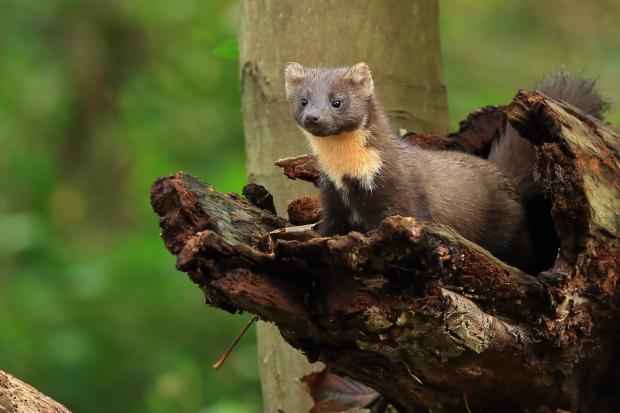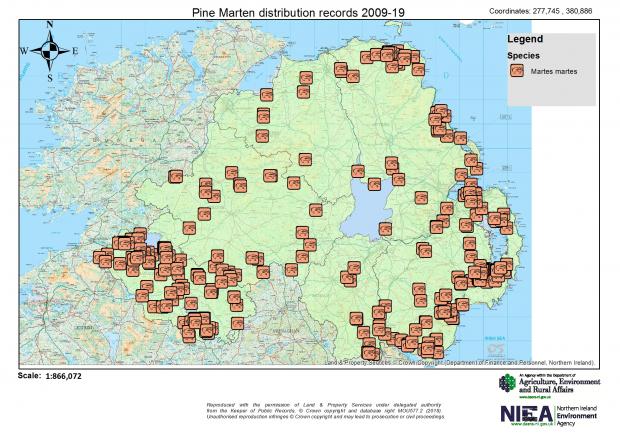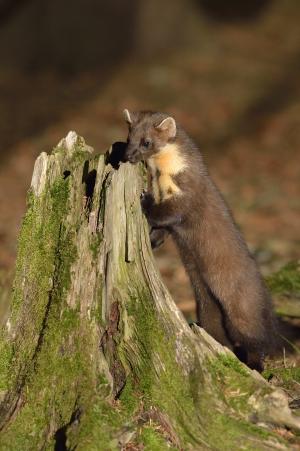

The numbers and range of the pine marten has expanded at a brisk pace over the last decade, until recently they were largely restricted to remote forests of counties Fermanagh and Tyrone. They have spread out across all six counties traversing a variety of habitats. Found primarily in woodland but have adapted to scrubland and urban fringes, inner city sightings are not unheard of. Pine marten have rapidly adapted to live with man, exploiting our weakness and laziness.

Being an omnivore, the pine marten has a wide and varied diet that includes meat, carrion, nuts and berries. The breadth of its diet clearly benefits its survival, being able to switch between food resources should one dry up. However the marten’s tastes can bring it into conflict with man. Pine marten will raid the bird feeders, pet food trays, bins and vegetable patches. They also will hunt domestic fowl and game birds particularly when the latter are accessible in the release pen.
The law
The pine marten are protected in Northern Ireland by the Wildlife (NI) Order 1985 as amended by being listed in Schedules 5, 6 and 7. It is an offence, except under licence, to capture or kill a pine marten, or to destroy or disturb its resting places. Learn more about wildlife law at the link below:
Guidance documents
It is normally relatively easy to secure your property from the pine marten. The NIEA has produced two documents to help home and landowners to reduce the risks of impacts of pine marten.
- The pine marten in Northern Ireland – A guide for householders
- The pine marten in Northern Ireland – How to exclude pine martens from game and poultry pens
Providing good quality alternative accommodation for the pine marten will reduce the risk that marten’s will try and enter the home.
Pine marten and grey squirrels
The pine marten may benefit you by reducing the numbers of rats and mice around your property. There is also strong evidence to suggest that the pine marten plays an important role in reducing the numbers of the invasive non-native grey squirrels. It is suggested high densities of pine martens lead to the natural reduction in grey squirrels and this has led to localised increases in red squirrel numbers. Although the mechanism of the impact the pine marten is having is unclear, it is more complicated than a basic predation factor. Clearly martens will predate red squirrels too but it is believed because the two species have co-evolved together the reds know how to survive with the martens. Scientific research is continuing in this field in Ireland and Scotland.
